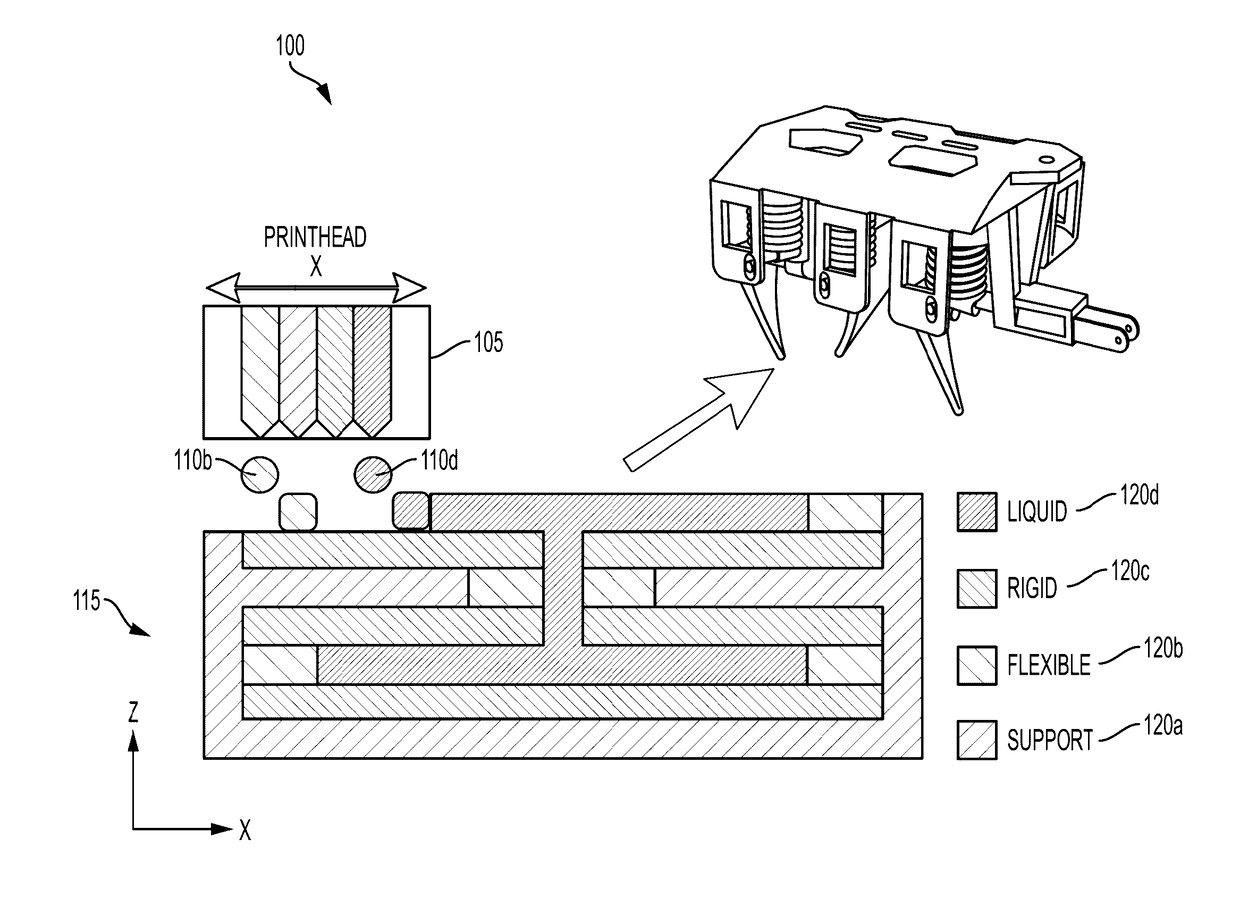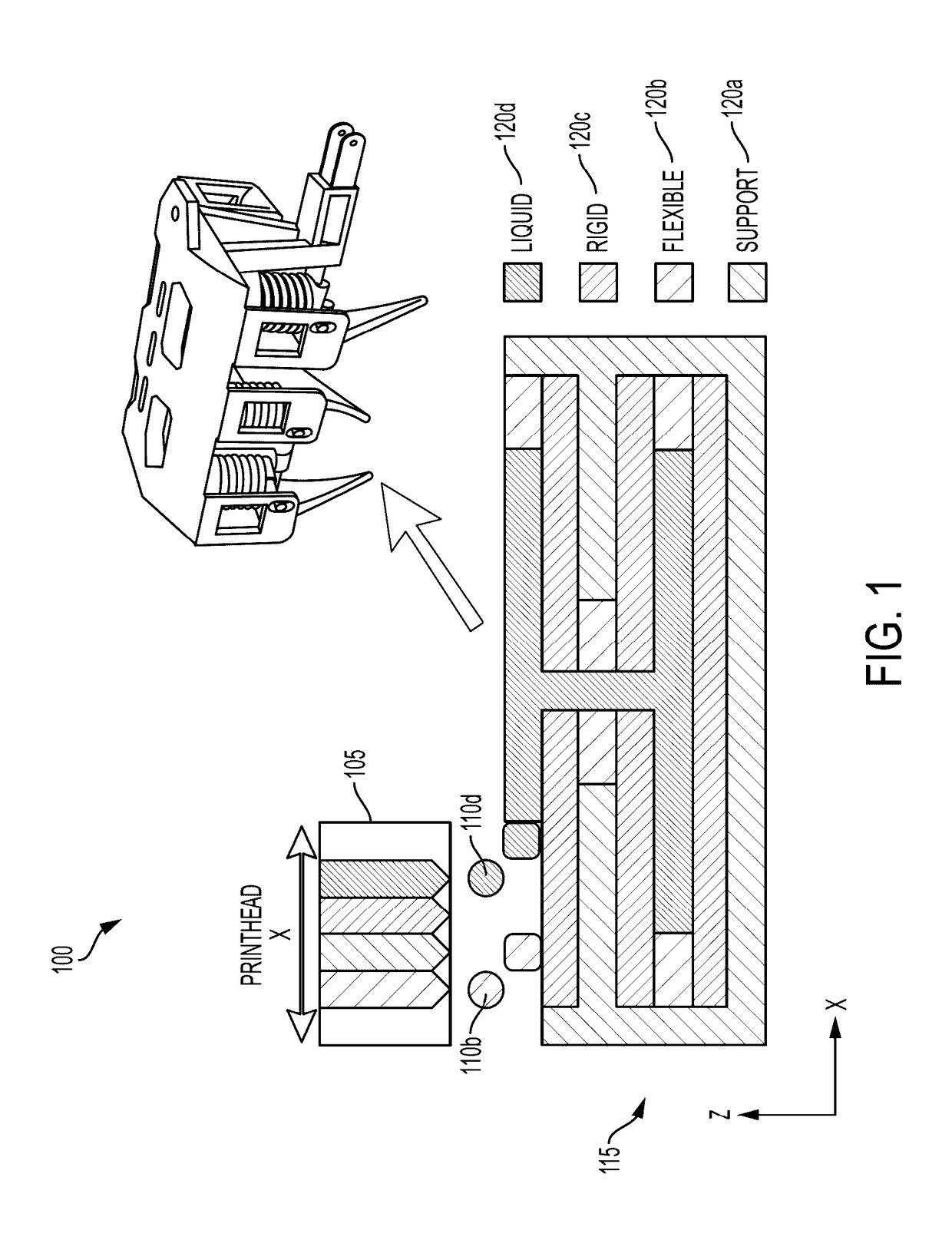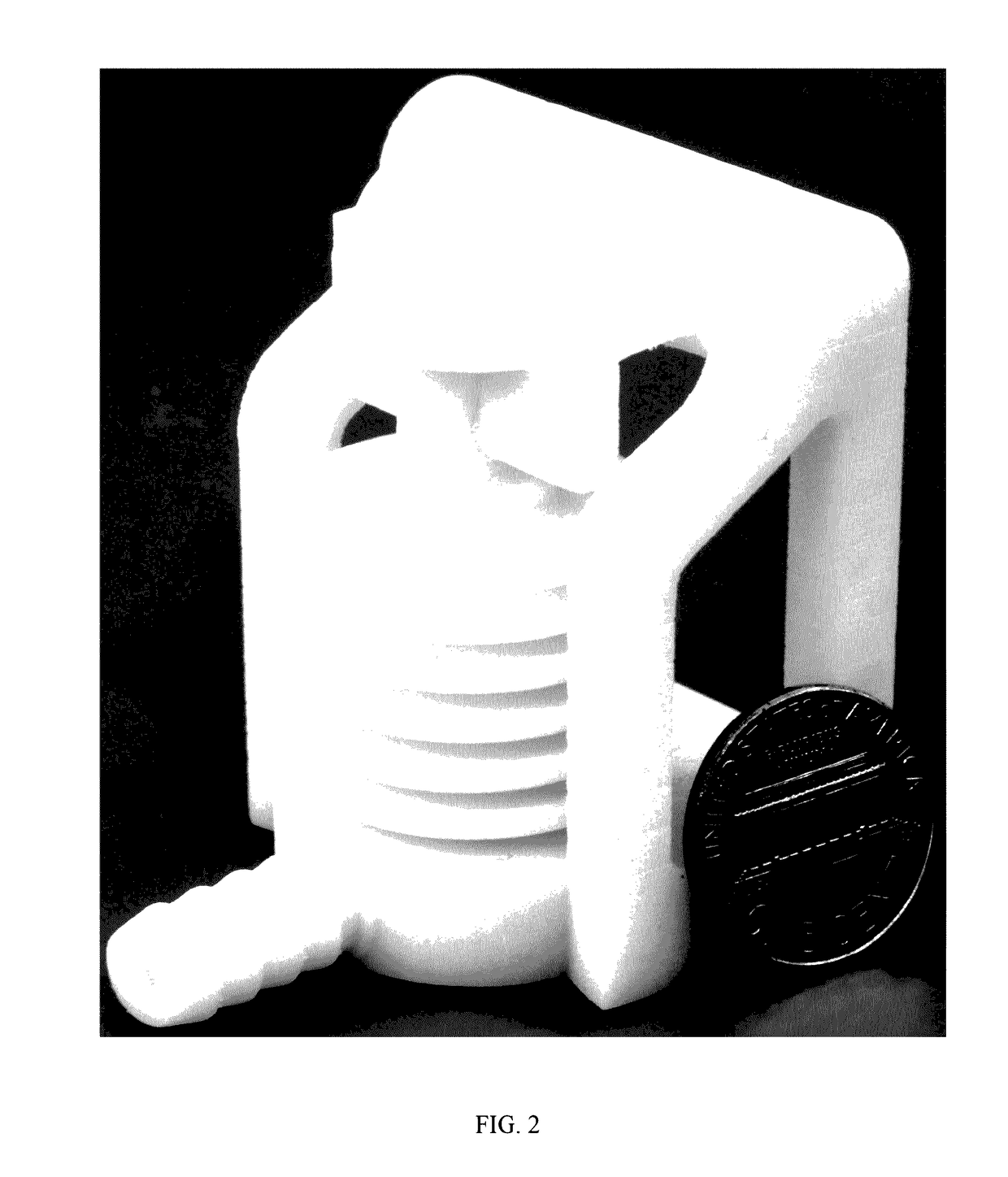Actuatable Assemblies Fabricatable by Deposition of Solidifying and Non-Solidifying Materials
a technology of solidifying materials and assemblies, applied in the field of actuatable assemblies, can solve the problems of relatively few opportunities for automating assembly, difficult and costly small changes, and time-consuming process of building robots, and achieve the effects of reducing manufacturing lead-times, reducing manufacturing costs, and eliminating most or all assembly steps
- Summary
- Abstract
- Description
- Claims
- Application Information
AI Technical Summary
Benefits of technology
Problems solved by technology
Method used
Image
Examples
Embodiment Construction
[0032]A description of example embodiments of the invention follows.
[0033]Multi-material additive manufacturing techniques offer a compelling alternative fabrication approach compared to conventional fabrication techniques, allowing materials with diverse mechanical properties to be placed at arbitrary locations within a structure, and enabling complex multi-part design iterations to be rapidly fabricated with trivial effort.
[0034]3D printers have been demonstrated with a variety of model materials, ranging from ice to nylon to cookie dough. However, non-solidifying materials have not been widely used as either model or support material. The role of support material in 3D printers is to provide a platform for overhanging geometries on subsequent layers during bottom-up, layer-by-layer fabrication; weak solidifying materials that can be washed away or dissolved are typically used as support. A related approach uses wax as a support material; the wax hardens soon after deposition and ...
PUM
| Property | Measurement | Unit |
|---|---|---|
| diameter | aaaaa | aaaaa |
| drive voltage | aaaaa | aaaaa |
| thick | aaaaa | aaaaa |
Abstract
Description
Claims
Application Information
 Login to View More
Login to View More - R&D
- Intellectual Property
- Life Sciences
- Materials
- Tech Scout
- Unparalleled Data Quality
- Higher Quality Content
- 60% Fewer Hallucinations
Browse by: Latest US Patents, China's latest patents, Technical Efficacy Thesaurus, Application Domain, Technology Topic, Popular Technical Reports.
© 2025 PatSnap. All rights reserved.Legal|Privacy policy|Modern Slavery Act Transparency Statement|Sitemap|About US| Contact US: help@patsnap.com



